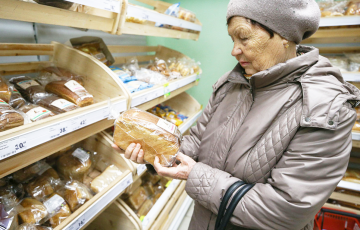Russians Name Real ‘Poverty Line’
8- 11.10.2024, 16:55
- 9,244

Half of the country's population fell below it.
The bar of the conditional minimum income, which the Russian authorities use to assess the level of poverty, is critically out of touch with reality, the overwhelming majority of Russian citizens believe, writes The Moscow Times.
According to official statistics, the number of poor people in the country is declining and is at a historical minimum: at the end of the second quarter of 2024, they were only 8.5% of the population, compared to 9% in 2022, 11% in 2021, and 13.5% in 2019.
The government set the “poverty line” at 15,354 rubles per month: people with an income below this are included in the statistics, and those with an income above this are excluded from it.
According to Russian citizens, the real “line” should be set at a level almost three times higher — 43 thousand rubles per month, a survey by the Superjob holding showed. Moreover, in large cities, predictably, in order not to be “poor”, you need to have an even higher income — for example, 45 thousand rubles in Moscow.
If we use the amount named by Russians, then more than half of the country's population will be poor, according to Rosstat data.
Thus, at the end of the second quarter, 54.1% of citizens had an income below 45 thousand rubles per month. More than a quarter — 28.7% — lived on an amount of up to 27 thousand rubles per month, or about $9 per day. Every seventh, or 15.7%, received up to 19 thousand rubles per month, that is, lived on an amount of less than $7 per day.
A radical reduction in poverty was the cornerstone of Putin's national projects when he began his fourth term in 2018. In 6 years, Putin promised to halve the number of poor in the country — to 6.6%.
However, despite numerous revisions of the methodology for calculating the income of Russians and the number of poor people, Putin's goal was not achieved: for 2024, the poverty level exceeded the target by almost 1.5 times, and over the 6-year period, Putin's plan failed every year. Thus, in 2019, Rosstat recorded 12.3% of the poor in the country instead of the required 12%, in 2020 — 12.1% instead of 11.1%, in 2021 — 11.1% instead of 10.2%, in 2022 — 9.8% instead of 9.3%.
Before the start of his fifth term, Putin again demanded a reduction in poverty, but set a more modest goal — 7% by 2030. “We must place special emphasis on reducing poverty, especially for large families,” Putin said in February. According to his plan, there should have been 12% of such families by 2030.











